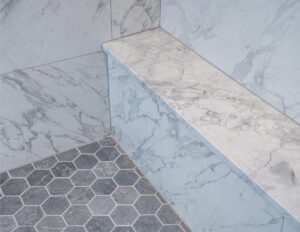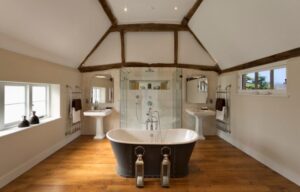How Much Does It Cost to Replace Kitchen Cabinets? Let’s Break It Down (Without Breaking the Bank)
Hey there, fellow home improvement junkies! So, you’re staring at your kitchen cabinets thinking, “These things have seen better days—like, decades ago.” Maybe they’re sagging, peeling, or just stuck in a Golden Girls aesthetic (no shade to Blanche, but…). Whatever the reason, you’re ready to replace them. But here’s the million-dollar question: How much will this actually cost? Let’s cut through the noise and talk real numbers, materials, and why working with a home renovation contractor like our team at Verified Builders in Denver can save you time, money, and a whole lot of headaches.
Contents
- 1 First Things First: Why Replace Cabinets? (Spoiler: It’s Not Just About Aesthetics)
- 2 The Big Question: What’s the Damage?
- 3 What’s Driving the Cost? Let’s Get Nerdy
- 4 1. Materials: Plywood vs. Particleboard vs. Unicorn Tears
- 5 2. Labor: Pros vs. DIY Disasters
- 6 3. Extras: Hardware, Lighting, and “Shiny Things”
- 7 “But Wait—What About Hidden Costs?” (Great Question!)
- 8 Why Go Pro? Let’s Get Real
- 9 FAQ: Your Burning Questions, Answered
- 10 Ready to Ditch Those 1980s Cabinets? Let’s Chat!
First Things First: Why Replace Cabinets? (Spoiler: It’s Not Just About Aesthetics)
We get it—new cabinets can transform your kitchen from “meh” to “magnificent.” But beyond looks, there’s practicality. Old cabinets might be:
- Structurally unsound (doors that won’t close, drawers that eat your spoons)
- Lacking storage (why is the potato masher living with the holiday plates?)
- Trapping odors (30-year-old spaghetti sauce vibes, anyone?)
And let’s be real: If you’re doing a whole house remodeling project or luxury home renovations, the kitchen is the heart of the action. But before you start dreaming of quartz countertops and under-cabinet lighting, let’s talk budget.
The Big Question: What’s the Damage?
Cabinet costs vary wildly—like, “Ikea vs. custom hand-carved mahogany” wildly. Here’s a quick cheat sheet:
| Cabinet Type | Average Cost (Installed) | Best For… |
|---|---|---|
| Stock Cabinets | $3,000 – $7,000 | Budget-friendly refreshes |
| Semi-Custom | $8,000 – $15,000 | Balance of personalization & cost |
| Custom Cabinets | $15,000 – $30,000+ | Luxury home renovations |
| DIY/Ikea Hack | $1,500 – $5,000 | Brave souls with a toolbox |
FYI: These ranges include materials, labor, and hardware. But wait—there’s more! (Said in your best infomercial voice.)
What’s Driving the Cost? Let’s Get Nerdy
1. Materials: Plywood vs. Particleboard vs. Unicorn Tears
The core material is everything. Particleboard cabinets are cheaper but might disintegrate if you sneeze too hard. Plywood? Durable, moisture-resistant, and worth the upgrade. Custom remodels often use solid wood (cherry, oak, walnut), which is gorgeous but $$$.
Pro Tip: At Verified Builders, we’ve seen clients save 20% by refacing cabinets instead of replacing them. Not always an option, but worth asking your remodeling company about!
2. Labor: Pros vs. DIY Disasters
Sure, YouTube makes installing cabinets look easy. But unless you’re a general contractor by day, you’ll likely end up with crooked doors and a permanent fear of power tools. Labor typically eats 30–50% of the total cost, but pros (like us!) handle:
- Precise measurements
- Electrical/plumbing adjustments
- That weird wall unevenness every home has
3. Extras: Hardware, Lighting, and “Shiny Things”
Don’t forget the bling! Soft-close hinges, pull-out shelves, and under-cabinet lighting add up. But hey, if you’re going for a bathroom remodeling-level glow-up, these details matter.
“But Wait—What About Hidden Costs?” (Great Question!)
Ah, the sneaky stuff. Here’s what most blogs won’t tell you:
- Permits: Depending on your city, you might need one. Denver’s pretty chill, but always check.
- Demo & Disposal: Removing old cabinets isn’t free (or fun).
- Surprise Repairs: Rotting subfloors? Outdated wiring? Your home addition contractor will find all the skeletons in your walls.
Why Go Pro? Let’s Get Real
Look, we’ve all been there—staring at Pinterest and thinking, “I could totally do this myself.” But here’s the tea: Kitchen cabinets are the foundation of your kitchen. Mess them up, and suddenly your fridge doesn’t fit, your dishes are homeless, and your partner’s giving you the “I told you so” side-eye.
Working with a home remodeling pro (like, ahem, Verified Builders) means:
- No Guesswork: We’ve handled 200+ kitchens in Denver. We know what works.
- Vetted subcontractors: Need a basement remodel contractor or bathroom renovation contractor? We’ve got a squad.
- Warranties: Because life’s too short to worry about drawer slides failing.
Plus, our reviews speak for themselves—5 stars on Google, baby!
FAQ: Your Burning Questions, Answered
Q: How long does cabinet replacement take?
A: Stock cabinets: 1–3 weeks. Custom builds: 8–12 weeks. Pro tip: Plan around holidays (supply chains hate Halloween).
Q: Can I mix high-end and budget cabinets?
A: Absolutely! Use pricier cabinets for focal points (like the island) and stock elsewhere.
Q: What’s the cheapest way to refresh cabinets?
A: Paint them! But if they’re falling apart, band-aids won’t help.
Ready to Ditch Those 1980s Cabinets? Let’s Chat!
At Verified Builders, we’re not just another remodeling company—we’re your neighbors. We drink the same coffee, complain about the same Denver traffic, and geek out over custom remodels that make homes work better. Whether you’re updating a single kitchen or tackling a basement contractors project, we’ve got your back.
So, if you’re searching for “home renovation contractor near me,” stop scrolling. Give us a shout, and let’s turn your kitchen into the space you’ve been dreaming of—no cheesy infomercial tactics required. 😉
P.S. We promise not to ghost you after the final payment. Pinky swear.


